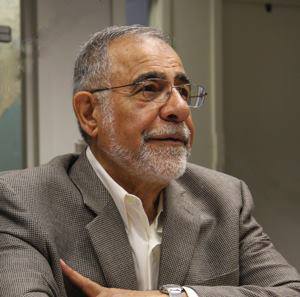Kurdish Americans facts for kids
| Total population | |
|---|---|
| ~ 40.000 | |
| Regions with significant populations | |
| Tennessee (especially Nashville,) Florida, Texas, California, New Jersey, Washington, D.C., growing population in Lincoln, Nebraska | |
| Languages | |
| Kurdish, American English | |
| Religion | |
| Mostly Islam with minorities of Atheism, Zoroastrianism & Agnosticism |
Kurdish Americans are people who live in the United States and have Kurdish family roots. They might have been born in the U.S. or moved here from other countries.
Most Kurdish Americans have recently moved from countries like Turkey, Iran, Iraq, and Syria. Many of them come from northern Iraq or northwestern Iran. The largest group of Kurds in the U.S. are from Iraq.
The first large group of Kurdish immigrants came as refugees in the 1970s. They were fleeing conflicts in Iraq. Another big group arrived in the 1990s. They were escaping a terrible event called the Anfal Campaign in northern Iraq. This was a time when many Kurds were killed or forced from their homes.
More recently, Kurds have come to the U.S. because of the Syrian Civil War (starting in 2011) and the Iraqi Civil War (starting in 2014). Some of these new arrivals worked as translators for the U.S. military.
Today, the internet helps connect Kurdish people all over the world. It helps Kurds in the U.S. stay in touch with their communities in the Middle East, Europe, Canada, and Australia.
Contents
History of Kurdish Migration to the U.S.
Kurdish people started moving to the U.S. in the 1900s. This happened after World War I. There have been several waves of people coming from the area known as Kurdistan.
After World War I, Kurds were promised their own area called Kurdistan. This promise was made in a treaty in 1920. However, this treaty was later changed. A new treaty in 1923 did not give Kurds their own land. Because of this, many Kurds faced difficulties and began to leave their homes. They moved to places like Europe and the U.S.
First and Second Waves of Immigration
After the World Wars, another group of Kurds arrived in 1979. They came mostly from northern Iraq and Iran. This was because of the Iranian Revolution in 1979. This revolution caused a lot of political problems and instability.
Many Kurds who came in 1979 were against the ruler of Iran, called the Shah. Because they opposed him, many were allowed to come to the U.S. and received help to travel here. The revolution also led to a war between Iran and Iraq from 1980 to 1988.
Later Waves of Immigration
The third big wave of Kurdish immigrants came between 1991 and 1992. This was the largest group to arrive. It happened partly because Kurds in Iraq had supported Iran during the Iran–Iraq War. In return, Saddam Hussein attacked Kurdish areas with chemical weapons.
The most famous attack was in Halabja in 1988. Many Kurds see this event as proof of a terrible crime against their people. Thousands of Kurds then moved to the U.S.
Another large group of Kurds came to the U.S. in 1996 and 1997. Many settled in Nashville, which has the biggest Kurdish community in the country. This wave followed a civil war between two main Kurdish political parties in Iraq. The Iraqi army then targeted many people.
An organization called the International Organization for Migration helped evacuate these refugees. They went to Guam, a U.S. territory, and then settled in the U.S.
After Saddam Hussein's government fell in 2003, many Kurds returned to their homes. However, the instability also caused some Kurds to move to the United States. This was due to disagreements over land.
Kurdish Population in the U.S.
In 2000, about 9,423 Kurds lived in the United States. More recent numbers suggest there are now between 15,000 and 20,000 Kurds. Other sources claim the number is closer to 40,000 people.
Nashville, Tennessee, has the largest Kurdish population in the U.S. A part of south Nashville is even called "Little Kurdistan." In 2000, about 1,770 Kurds lived in Nashville. By 2017, there were about 15,000 Kurds in Nashville. This makes it the biggest Kurdish community in the country.
Other cities with many Kurds include Dallas, Texas, Atlanta, Georgia, San Diego, California, Binghamton, New York, and Bridgeport, Connecticut. Most of these Kurds come from northern Iraq or northwestern Iran.
Kurds from Iraq
Kurds in Iraq have faced attempts to change their culture and language. This happened especially after the Al-Anfal campaign in the early 1990s. Many Kurdish families were forced to leave their homes. This led to many Iraqi Kurds moving to the U.S.
Iraqi Kurds in America stay in touch with the Kurdistan Regional Government (KRG). They do this through cultural centers, mosques, and other groups. Kurdish groups in the U.S. have sent a lot of help to Kurds in Iraq.
Kurds from Iran
In Iran, there were rules that tried to ban the Kurdish language. They wanted people to speak only Persian. Despite these rules, Iranian Kurds had a short period of self-rule in 1945. This was called the Republic of Mahabad.
The Iranian Revolution in 1979 caused many Iranian Kurds to leave. It created economic and political problems. People who were against the Shah of Iran received help to get asylum in the U.S. This led to many Iranian Kurds moving here.
Kurds in Iran face challenges. Even though the country's laws say all ethnic groups have equal rights, Kurds often have fewer opportunities. This can be seen in healthcare, education, and jobs.
Kurds from Turkey
The "Kurdish Question" is a long-standing issue in Turkish politics. The Turkish government has tried to make Kurds fit in. They have tried to stop the Kurdish language and have treated Kurds unfairly in jobs. They even called Kurds "Mountain Turks" to ignore their identity.
Fewer Kurds from Turkey have moved to the U.S. compared to those from Iran and Iraq. This is because many Turkish Kurds prefer to move to closer countries in Europe. Countries like Germany, France, and Sweden have large Kurdish communities.
Kurdish Languages in the U.S.
Kurdish immigrants speak different dialects of the Kurdish language. The dialect depends on where they come from in Kurdistan. In Turkey and Iran, the Kurdish language has sometimes been banned. However, in Iraq, Kurdish is an official language, along with Arabic.
The Sorani dialect is often used for writing Kurdish. It is the official written form in Iraq. There are three main groups of Kurdish dialects:
- Northern Kurdish (called Kurmanji) - This is the largest group.
- Central Kurdish (called Sorani)
- Southern Kurdish (called Laki)
Because of these different dialects, it's hard to say exactly which Kurdish languages are spoken in the U.S. Younger Kurds in the U.S. often speak English more than older generations. In other countries, moving away from home has helped different Kurdish groups understand each other better. This helps create a stronger Kurdish community.
Notable Kurdish Americans
- Jamal al Barzinji: A Kurdish-American businessman.
- Azad Bonni: A professor of neurobiology at Washington University School of Medicine.
- Jano Rosebiani: An Iraqi-Kurdish American filmmaker. He has won many international awards.
- Arwa Damon: An American journalist who works for CNN International.
- Hakki Akdeniz: A Kurdish philanthropist and restaurant owner in New York City. He founded Champion Pizza.
- Saad Abbas Ismail: An American archaeologist, translator, and writer.
- Edip Yüksel: An Islamic philosopher and writer.
- Sam Shahidi: A businessman and CEO of Happy Dad Hard Seltzer.
- John Shahidi: An American businessman and manager, brother of Sam Shahidi.
- Hamdi Ulukaya: A businessman and entrepreneur, founder of Chobani yogurt.
- Hanna Jaff: A reality television personality and activist.
- Herro Mustafa: A diplomat.



